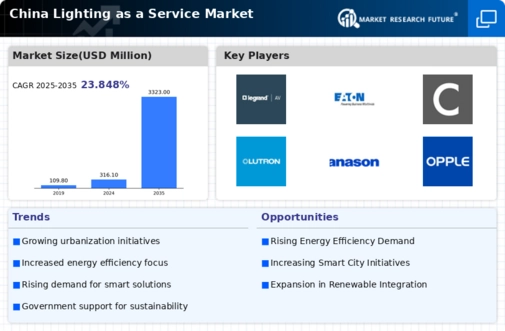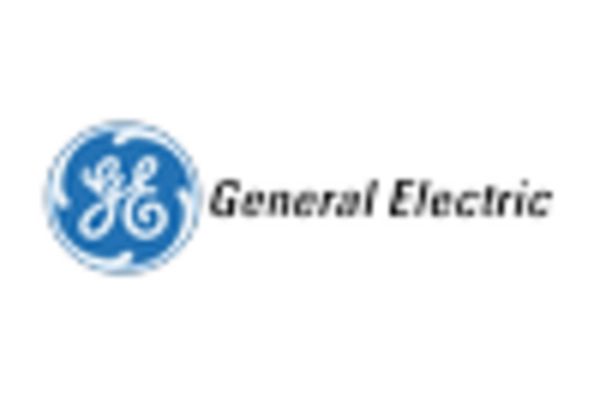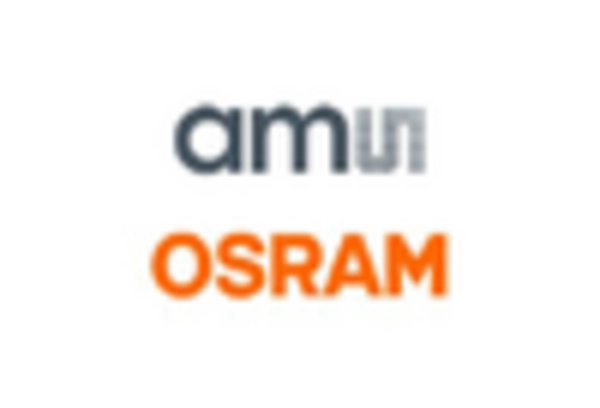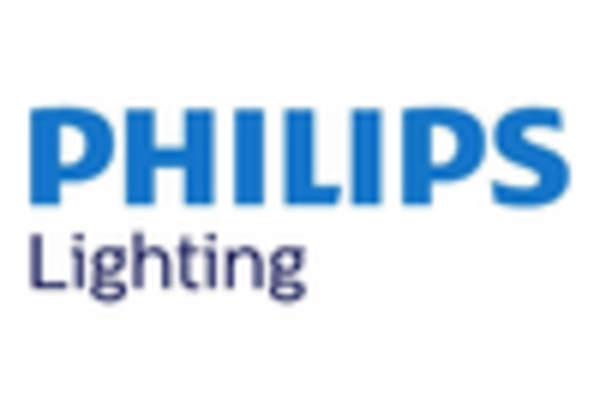Environmental Regulations and Compliance
China's stringent environmental regulations are significantly influencing the lighting as-a-service market. The government has implemented various policies to reduce carbon emissions and promote energy efficiency. These regulations compel businesses and municipalities to adopt sustainable lighting solutions that comply with environmental standards. The lighting as-a-service model aligns well with these regulations, as it promotes the use of energy-efficient technologies and reduces waste through maintenance and upgrades. Companies that fail to comply with these regulations may face substantial fines, making the adoption of lighting as-a-service an attractive option. As a result, the market is expected to see increased adoption rates as organizations strive to meet compliance requirements while also benefiting from the cost savings associated with energy-efficient lighting.
Cost Efficiency and Financial Flexibility
The financial model of the lighting as-a-service market provides cost advantages for businesses and municipalities in China. By shifting from capital expenditure to operational expenditure, organizations can allocate resources more effectively. This model allows for predictable budgeting, as clients pay a fixed monthly fee for lighting services, which includes installation, maintenance, and upgrades. As energy costs continue to rise, the potential savings from energy-efficient lighting solutions become increasingly appealing. Reports indicate that businesses can save up to 30% on energy costs by adopting these services. This financial flexibility is particularly attractive to small and medium-sized enterprises (SMEs) that may lack the upfront capital for traditional lighting installations, thereby driving the growth of the lighting as-a-service market.
Growing Demand for Smart City Initiatives
The push for smart city initiatives in China drives the lighting as-a-service market. As urban areas seek to enhance livability and sustainability, the integration of smart lighting solutions becomes essential. These initiatives often focus on improving public safety, reducing energy consumption, and enhancing the overall quality of life for residents. The lighting as-a-service market is well-positioned to support these goals, as it provides scalable and flexible lighting solutions that can be easily integrated into existing infrastructure. With investments in smart city projects expected to reach trillions of yuan over the next decade, the demand for innovative lighting solutions is likely to surge. This trend indicates a robust growth trajectory for the lighting as-a-service market, as cities increasingly prioritize smart technologies in their development plans.
Technological Advancements in Lighting Solutions
The continuous evolution of lighting technologies, such as LED and IoT, drives the lighting as-a-service market in China. These advancements not only enhance energy efficiency but also enable smart lighting systems that can be remotely monitored and controlled. The integration of IoT allows for real-time data collection and analysis, leading to optimized energy usage and improved maintenance schedules. As the demand for smart city initiatives grows, the lighting as-a-service market is likely to expand, with projections indicating a compound annual growth rate (CAGR) of over 20% in the coming years. This technological shift is essential for meeting the increasing expectations of consumers and businesses for sustainable and efficient lighting solutions.
Rising Urbanization and Infrastructure Development
The rapid urbanization in China is driving the demand for efficient lighting solutions. As cities expand, the need for modern infrastructure, including street lighting and public spaces, becomes paramount. This trend will benefit the lighting as-a-service market as municipalities seek cost-effective and sustainable lighting solutions. With urban populations projected to reach 1 billion by 2030, the market for lighting services is expected to grow significantly. This growth is further supported by the government's commitment to enhancing urban infrastructure, which includes the adoption of smart lighting technologies. The integration of these technologies not only improves energy efficiency but also reduces operational costs, making the lighting as-a-service market an attractive option for urban planners and local governments.

















Leave a Comment